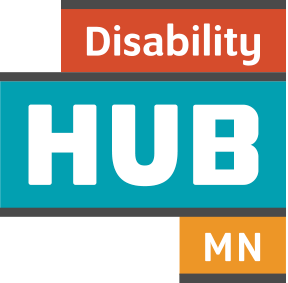It began in 1969 with a simple question from a student named Jim Christy: “Why can’t students with disabilities play high school sports?” This inquiry started a movement in Minnesota that created inclusive athletic opportunities for students around the state. Today more than 65 schools in Minnesota participate in adapted sports. The road to establish adapted athletics was filled with perseverance, drive, and the steadfast belief that all students deserve the chance to play sports.
Jim Christy and a few classmates posed their question to their physical education teacher, Ed Prohofsky, at Marshall-University High School in Minneapolis. Christy, who was physically impaired, shared his desire to play floor hockey competitively with other students, as he already played the sport at the Courage Center and in gym class. Prohofsky reached out to other groups to form teams for competitive play. The first adapted floor hockey league began in 1974 with four teams: one from the Courage Center, two from Marshall-University High School and a team comprised of high school alumni. That league attracted interest from more students who wanted to participate, thus began the growth of adapted sports.
For Christy, that passion to ensure sporting opportunities were available to all continued even after he graduated from high school. He went on to be part of the Minnesota Association for Adapted Athletics which was incorporated in 1984. Adapted soccer began in 1979 with goals initially being taped off on the wall. In 1987, ingenuity and creativity led Christy and Clyde Riddel, a fellow MAAA member, to fashion PVC pipe and netting to create physical goals for adapted soccer. That eventually led to the use of commercially produced goals for adapted games.
Christy was inducted into the Minnesota State High School League Hall of Fame in 2009 for his work in bringing adapted athletics to fruition in Minnesota. Prohofsky, for his part, continued to foster opportunities for students with disabilities to participate in sports for years to come. These two individuals, along with countless others over the past decades, gave their time and talents to work towards the goal of making adapted sports available to as many athletes as possible.
When a vote was brought to the MSHSL delegate assembly in 1992 asking it to accept adapted sports into the league, it passed unanimously. Thus began a new era in adapted sports that allowed teams the chance to be recognized for their hard work by participating in MSHSL state tournaments.
There are currently four adapted sports: soccer (fall), hockey (winter), softball, and bowling (spring). Each sport is divided into two divisions: CI (cognitive impairment) and PI (physical impairment). Bowling also has an ASD division for students who have autism spectrum disorder. The latest numbers show that over 1,500 athletes from all over the state participate in high school adapted athletics each year.
What started out more than 50 years ago as a few students with disabilities wanting the same opportunities to play sports like their fellow classmates has grown into thousands of athletes over the decades: creating lasting memories and having fun. Adapted sports in Minnesota continues to be an important part of the high school experience for so many students with disabilities.
*Historical information of adapted sports in Minnesota courtesy of MSHSL and MAAA.
